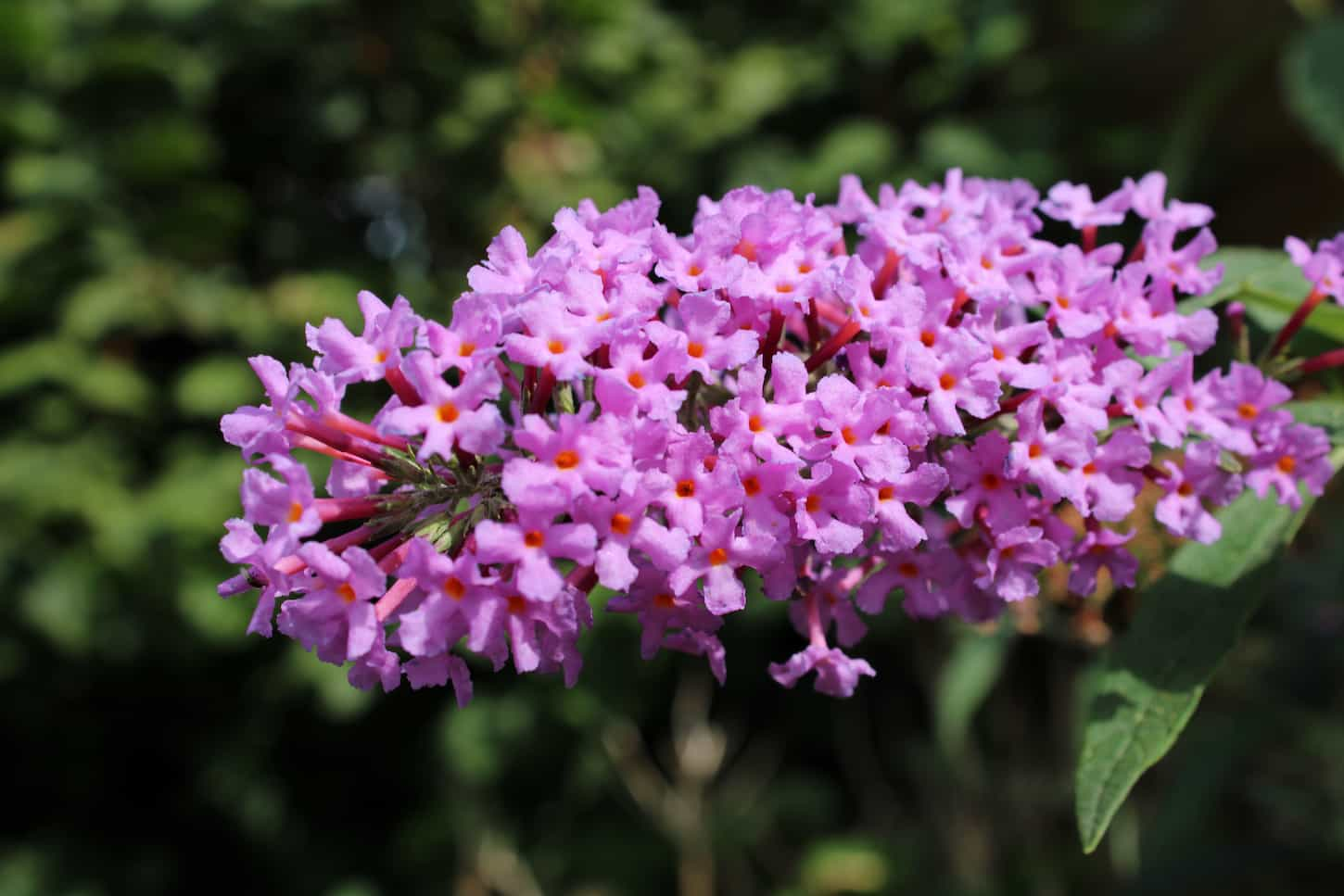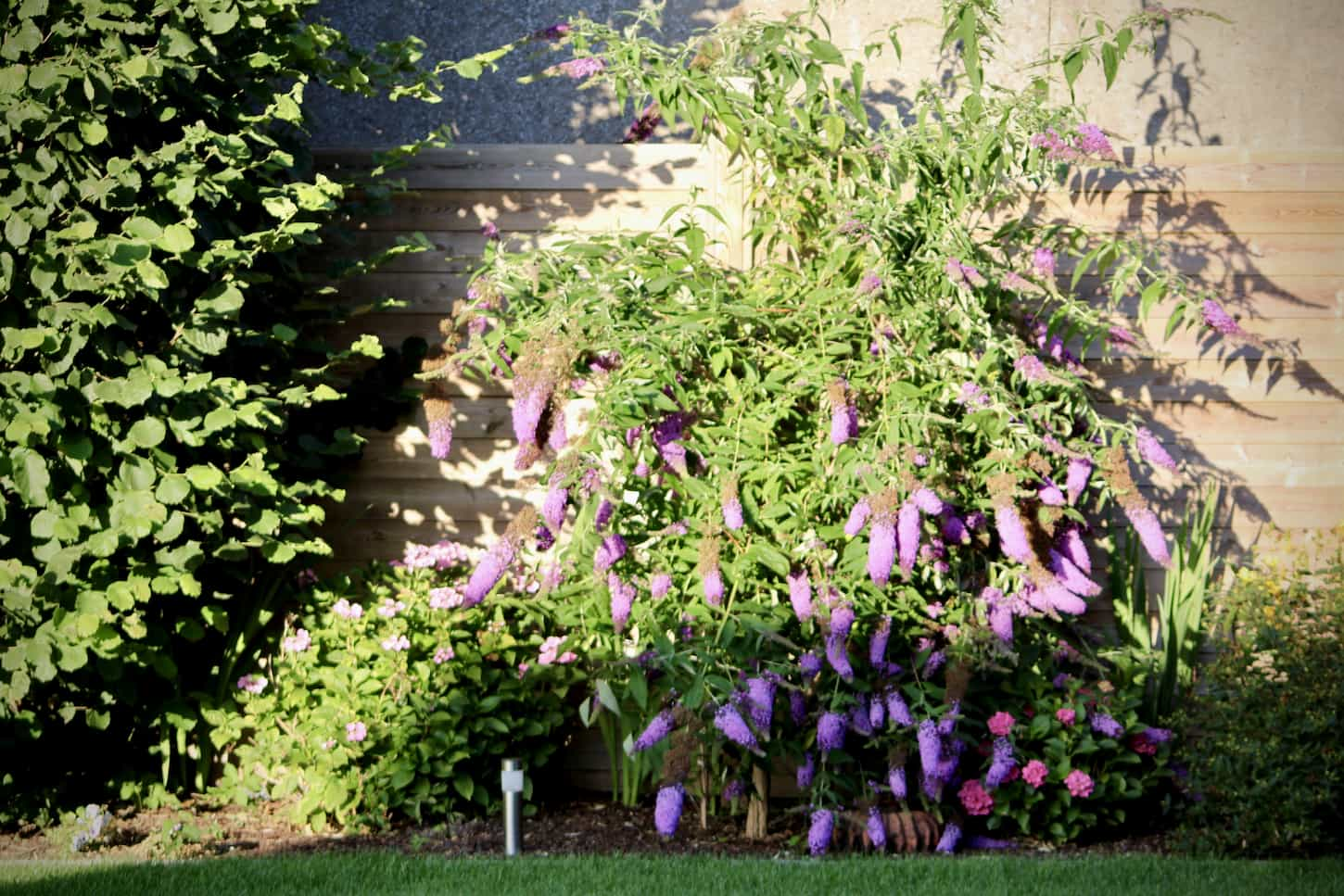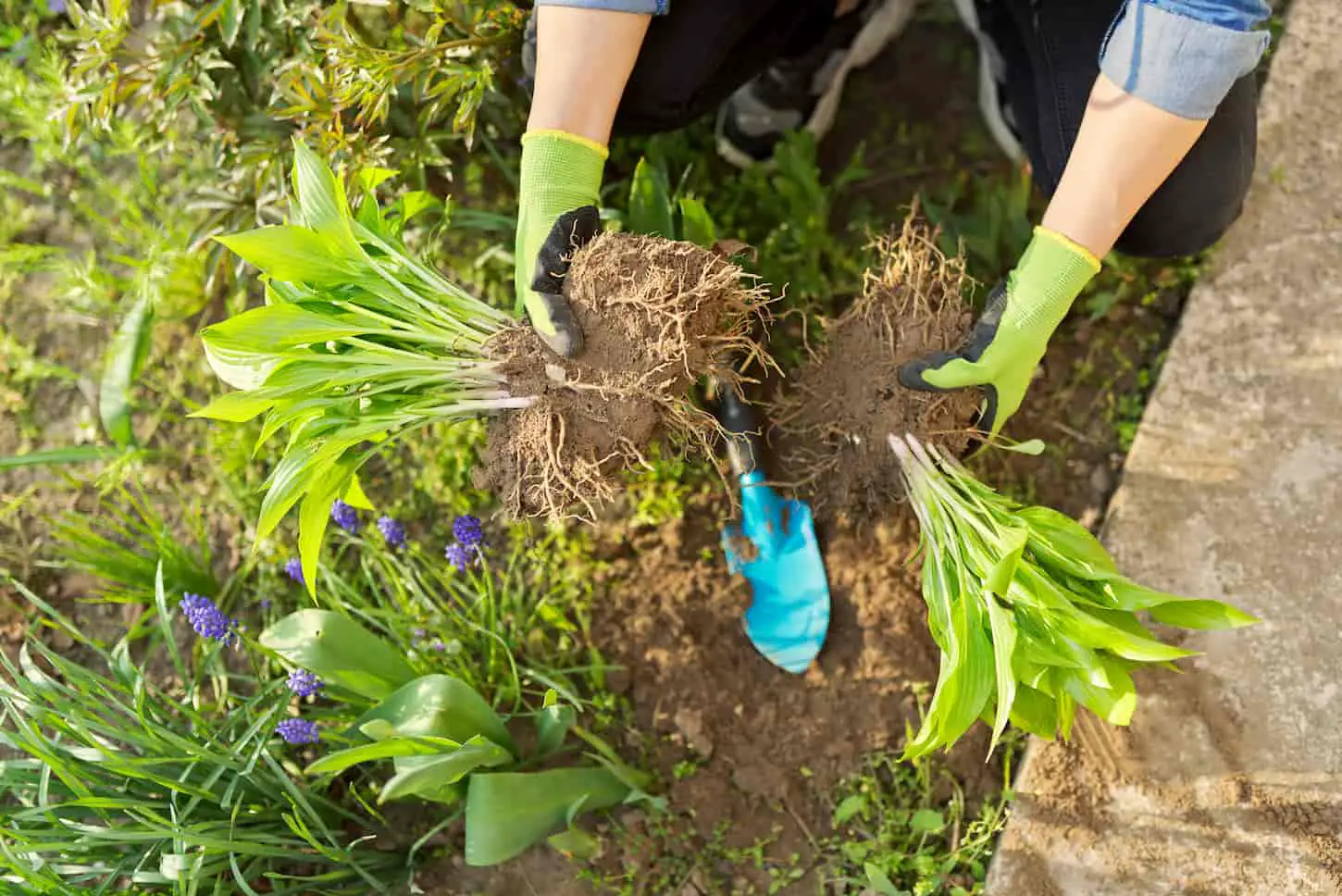The gorgeous dwarf butterfly bush plants, which come in a range of colors and varieties, make an excellent addition to any garden. However, to keep dwarf butterfly bushes happy and healthy there are a few things a budding gardener ought to know.
Dwarf butterfly bushes grow to a maximum of between two and three feet in height and are semi-deciduous plants. There are many varieties of dwarf butterfly bushes available, usually named after their signature color.
These shrubs are hardy and will grow in a variety of terrains including containers. To care for this plant, pay careful attention to its water intake, hours of sunlight, drainage system, and the type of soil in which it’s planted.
It’s all in the details! Read on to find out more about dwarf butterfly bushes and the answers to some frequently asked questions.

What Are Dwarf Butterfly Bush Varieties?
There are many varieties of dwarf butterfly bush available, which may vary in size, color, and shape. Some examples of dwarf butterfly bush varieties include but are not limited to:
- Butterfly Bush ‘Border Beauty’
- Buddleia ‘Miss Ruby’
- Butterfly Bush Flutterby Petite Tutti Fruitti Pink
- Buddleia Lo & Behold series
- Buddleia ‘Miss Molly’
- Buddleja ‘Lilac Chip’
- Buddleia ‘Pink Micro Chip’
Varieties of dwarf butterfly bushes are often named after their distinctive color. And seeing as this list is not exhaustive, it is recommended to ask around at the local garden center or horticultural expert for advice on dwarf butterfly bushes varieties that are best suited to the area.
What Is the Smallest Dwarf Butterfly Bush?
The smallest dwarf butterfly bush variety is the ‘Pink Micro Chip’ which grows to a height of between 1.5 and 2 feet.
The ‘Pink Micro Chip’ dwarf butterfly bush is a hybrid between the ‘Lilac Chip’ and the ‘Miss Molly varieties’. The resultant Buddleia ‘Pink Micro Chip’ is the smallest dwarf butterfly bush and only grows to be about eighteen to twenty-four inches in height.
The bush spreads more horizontally than it grows vertically and has a thick, dense growth pattern. This makes it ideal for covering larger patches of garden space. As the name suggests, the ‘Pink Micro Chip’ produces small, pink, orchid-like flowers bunched into long panicles.
How Tall Do Dwarf Butterfly Bushes Get?
Dwarf butterfly bushes can grow to be between two and four feet in height and in width. The size of the dwarf butterfly bush depends on the climate and environmental factors.
While their regular-sized contemporaries can grow to be between 4 and 10 feet in size, the dwarf butterfly bush only grows to between 2 and 3 feet in height. Due to the dwarf butterfly bush’s arching branches, the shrub tends to grow as much in width as it does in length.
This gives the dwarf butterfly bush a more rounded look compared to other species of shrubs. For example, in warmer climates, the dwarf butterfly bush’s branches will straighten out and the ‘bush’ will resemble a tree.
For a dwarf butterfly bush to grow to its full height of around three feet, it needs to receive direct sunlight every day. This shrub does not grow in partial or full shade at all, which means it is not an indoor plant. The dwarf butterfly plant will also require well-aerated, non-dense soil.
Can Standard Butterfly Bushes Be Kept Small?
It is possible to keep your full-sized butterfly bush small by regularly pruning the shrub. To minimize growth, the butterfly bush should be pruned before the new-growth cycle begins early in spring.
Standard butterfly bushes can grow to be between four and ten feet in length and width. While the flowers they produce can be beautiful, this may not be an ideal size shrub for many people, especially those who are looking for a lovely pop of color but can’t spare too much garden space.
While dwarf butterfly bushes can be purchased from garden centers and horticultural shops, it’s possible to keep a standard butterfly bush small with little effort. The most effective way to keep a standard butterfly bush from growing to its full height is to cut down the branches every winter.
The branches do not have to be chopped right down to the soil level. It’s best to chop the branches until they are about ten to twelve inches in height.
It would be best to consult with the local horticultural expert to determine how fast the shrub will grow in the local climate and the length to which the branches should be cut.
It may be possible to restrict growth by attaching pieces of twine to the branches. The branches can be directed to grow in a desired shape or direction, such as vertically instead of horizontally. This method may not work if the desired effect is to minimize growth entirely.

Are Dwarf Butterfly Bushes Hardy? What Hardiness Zones Can Grow to Dwarf Butterfly Bushes?
Dwarf Butterfly bushes are fairly hardy shrubs and will grow in USDA plant hardiness zones five, six, seven, eight, and nine. Unfortunately, butterfly bushes are considered to be an invasive species in some regions, so be sure to check the regulations in the area.
Despite needing direct sunlight and nutrient-rich, aerated soil, the dwarf butterfly bush can grow in a variety of terrain and climates. The dwarf butterfly bush simply needs some sunlight, water, and good soil to thrive.
There aren’t any insects or diseases that prey specifically on dwarf butterfly bushes. One of the major issues with dwarf butterfly bushes is root rot. This occurs due to a poor drainage system.
Other than root rot, the only insects that will prey on a dwarf butterfly bush are caterpillars and butterflies. Instead of using an insecticide to get rid of any bugs, it is better to either handpick the insect out or simply leave them alone.
Can You Grow a Dwarf Butterfly Bush in a Container?
It is possible to grow a dwarf butterfly bush in a container. However, the drainage system should be optimized, and the correct type of soil should be used. The container should also receive plenty of sunlight all year round.
Dwarf butterfly bushes grow best in aerated soil that has an excellent drainage system. To grow a dwarf butterfly bush in a container, care must be taken to ensure that the container is well-ventilated and allows for ample drainage. This can be achieved by creating holes towards the bottom end of the container.
Either a drill or a sharp knife can be used to create drainage holes, depending on what material the container is made up of.
The soil placed into the container should not be too dense or claylike. A lightweight, well-aerated type of soil should be used, and care should be taken not to pack the soil too tightly down into the container.
This type of soil also provides a great indication of whether the plant needs to be watered; once the soil shows signs of dryness the soil should be watered appropriately.
When it comes to choosing an appropriate container size for a dwarf butterfly bush, size matters! The dwarf butterfly bush grows best in direct sunlight and should not be placed indoors or within shady areas. This is true throughout the year, even during winter.
For this reason, it may be useful to place the dwarf butterfly bush in a smaller, more lightweight container instead of a heavier one so that it can be moved into the sunlight if need be. Lightweight gardening pots with wheels can also be used.
Is a Dwarf Butterfly Bush Evergreen or Deciduous?
The dwarf butterfly bush is deciduous to semi-evergreen. This can depend on the climate and growth conditions. In warmer climates, the dwarf butterfly bush is less likely to shed all of its leaves annually.
For those that are unfamiliar with the terminology, deciduous trees shed all their leaves at maturity. The leaves will slowly change color, from green to yellow to a shade of red or orange, before drying up and falling off the branches.
This usually happens once a year during the fall season. The entire plant will become bare and brittle until springtime. During spring, new leaves will start to grow and the tree will begin to grow once more.
Semi-evergreen trees do not go for long periods of time without leaves. The leaves do fall off once they reach maturity; however new leaf growth begins almost immediately afterward.
This is different from evergreen trees which do not lose their leaves at any point during the year. Semi-evergreen plants may also be known as semi-deciduous trees.
Is a Dwarf Butterfly Bush Invasive?
The dwarf butterfly bush is non-invasive as it is sterile, unlike the full-sized variety. Dwarf butterfly bushes do not have seeds; therefore they cannot grow by germination. This means that the dwarf butterfly bush will not take over the garden.
Invasive plant species are often spread by germination, allowing them to take over an entire area. This, in turn, draws natural resources away from indigenous plants which end up dying out.
This is often the case with the standard-sized butterfly bush which is considered to be invasive in many areas. However, the dwarf-sized butterfly bush does not produce seeds which means these plants do not germinate.
This makes dwarf butterfly bushes an ideal alternative to standard-sized butterfly bushes, especially for people who are after a garden that looks colorful and well-maintained.
Care of Dwarf Butterfly Bush
Sunlight, well-aerated soil, a good drainage system, and water. That’s all a dwarf butterfly bush really needs to survive.
Dwarf butterfly bushes really love the sunlight, in fact, they need a minimum of six hours of direct sunlight a day to grow properly. In colder climates, dwarf butterfly bushes can require a minimum of eight hours of sunlight.
When it comes to the type of soil that suits the dwarf butterfly bush best, clay-like soils are not ideal. Neither is densely packed soil nor soil covered in the mulch.
Got access to alpacas? Read my article on using their manure to make your garden grow beautifully! How to Fertilize with Alpaca Poop: The Complete Guide.
These types of soils can lead to root rot and other fungal or bacterial diseases. The best type of soil to use is healthy, well-aerated soil that already has enough nutrients in it, so fertilizer is not required.
Root rot can also occur if the shrub is not placed in an area with a good drainage system. Whether the dwarf butterfly bush is placed directly in the ground or in a container, there should be ample space for water to drain down.
This can be achieved by allowing lots of room between bushes when planting, or by creating holes in the container.
The colorful shrubs can be watered once the soil around them becomes noticeably dry. It is recommended that dwarf butterfly bushes be watered by hand and carefully monitored for overwatering.
Overwatering the dwarf butterfly bush can cause weakening of stems, reduction in the number of flowers, and dieback. Dieback is a phenomenon where the shrub begins to die starting at the leaves or tips rather than the roots.

Key Takeaways and Next Steps
There are tons of different variations of dwarf butterfly bushes, which are usually identifiable by their color. While the dwarf butterfly bush ranges from two to three feet in height, the smallest member of the group is the ‘Pink Micro Chip’ which only grows to a maximum height of two feet.
Standard-sized butterfly bushes can be kept small with regular pruning and routinely cutting the plant down close to the ground.
Caring for a dwarf butterfly bush is easy, it just needs sunlight, water, a good drainage system, and well-aerated soil. Try to avoid clay-like soil and overwatering as this can lead to the plant dying or developing a disease.
Finally, don’t be alarmed by the care instructions, dwarf butterfly bushes are hardy plants that will make a great addition to any garden with their signature long, colorful panicles.
Now that you know more about growing dwarf butterfly bushes, make sure you read my article on 10 Ways to Keep Chickens Out of Flower Beds and Gardens, so that your chickens and your flowers are all safe!
Resources
Learning from your own experience is essential, but learning from others is also intelligent. These are the sources used in this article and our research to be more informed as homesteaders.
- Barlowe, Barrett. “The Varieties of the Dwarf Butterfly Bush.” Garden Guides, 3 Sept. 2020, gardenguides.com/129931-varieties-dwarf-butterfly-bush.html.
- “Buddleja Lo and Behold® ‘Pink Micro Chip’ (Buddleja Pink Chip, Pink Micro Chip Buddleja, Pink Micro Chip Butterfly Bush, Summer Lilac) | North Carolina Extension Gardener Plant Toolbox.” North Carolina Extension Gardener Plant Toolbox, plants.ces.ncsu.edu/plants/buddleja-lo-behold-pink-micro-chip. Accessed 5 Mar. 2022.
- “Butterfly Bush – The Ultimate Care Guide.” Proven Winners, https://www.provenwinners.com/learn/how-plant/proven-winners-ultimate-guide-butterfly-bush. Accessed 6 Mar. 2022.
- “Dieback | Plant Pathology.” Encyclopedia Britannica, https://www.britannica.com/science/dieback. Accessed 6 Mar. 2022.
- Joy. “Butterfly Bush Is Invasive Do NOT Plant.” Ecosystem Gardening, 3 Feb. 2022, http://www.ecosystemgardening.com/butterfly-bush-is-invasive-do-not-plant.html.
- “Keeping a Butterfly Bush Small-Ish? In the Ask a Question Forum – Garden.Org.” Garden.Org, garden.org/thread/view/24750/Keeping-a-butterfly-bush-small-ish. Accessed 5 Mar. 2022.
- “Lo and Behold® ‘Pink Micro Chip’ – Butterfly Bush – Buddleia x.” Proven Winners, https://www.provenwinners.com/plants/buddleia/lo-behold-pink-micro-chip-butterfly-bush-buddleia-x. Accessed 5 Mar. 2022.
- Tanner, Cory. “Butterfly Bush | Home and Garden Information Center.” Home & Garden Information Center | Clemson University, South Carolina, 22 Feb. 2022, hgic.clemson.edu/factsheet/butterfly-bush.
- “Types of Butterfly Bushes (Including Dwarf Butterfly Bush Plants) – Pictures.” Leafy Place, 7 July 2021, leafyplace.com/butterfly-bush.
I want to plant 4 to5 dwarf butterfly bushes. One is the double dwarf Micro Chip.
Doe you sell plants?
I don’t sell plants, no. I’d check with a local nursery to see if they sell the varieties you want and if they’ll do well in your zone. If your local nursery doesn’t stock them, there are several great online options. I wish you all the best!